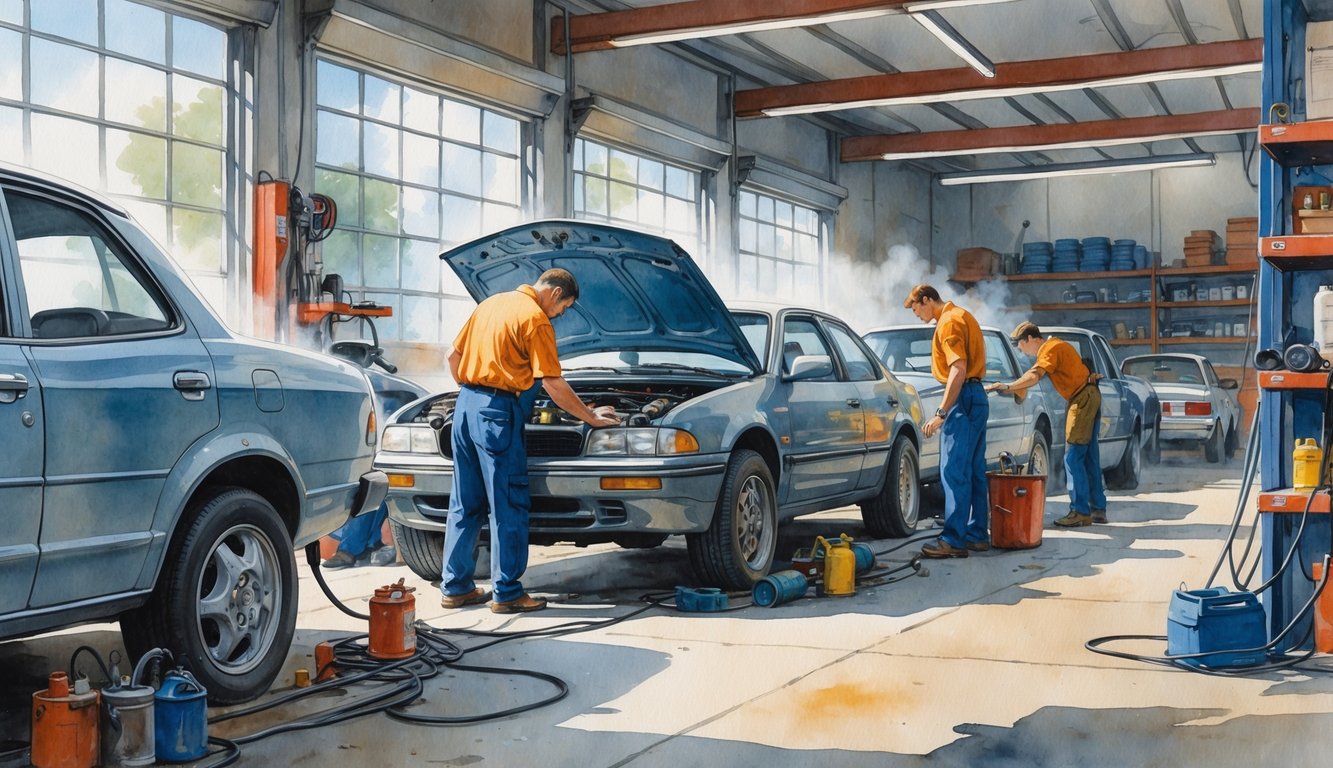
Towing Needs in Emergencies
Tow truck drivers know me by name now. Usually it’s after I tried a “quick fix” that lasted a week. AAA’s 2023 data says high-mileage drivers call for roadside help 30% more often if they skip maintenance. That tracks. Nobody talks about how sketchy it feels waiting for a tow on the shoulder, either.
Towing isn’t just expensive. It’s a slap in the face for thinking you could cheat fate. In winter, you wait forever. Most of the time it’s for stuff like dead batteries or a belt that should’ve been changed two years ago. Sometimes it’s the tiniest thing—a torn serpentine belt, low power steering fluid—and boom, you’re stranded.
The numbers get ugly fast: $100 for a tow, $400 for the repair, and you start questioning your life choices. I had a friend towed twice in a month because he thought noisy wheel bearings were “just a phase.” They weren’t.
Risks to Reliability and Longevity
Second breakdown, you’d think I’d learn. Nope. High-mileage cars don’t forgive. My old mechanic (guy’s been at Ford since the ‘90s) always said, “Change your fluids or get used to check engine lights.” Not exactly comforting when you’re waiting three weeks for a backordered part.
Every time you skip something, it’s like shaving years off the car’s life. NHTSA found skipped brake service bumps failure rates by 18% after 100,000 miles. Suspension gets sloppy, leaks turn into disasters, check engine lights just… stay on. It’s never just one thing. The problems pile up, especially if you’re driving a car that’s already seen better days.
And nobody warns you: insurance hates neglected cars, resale value tanks, and selling a 200,000-mile beater with mystery noises? Good luck. “Needs TLC”—sure, buddy.
The Role of Trusted Mechanics in Preventing Gaps

Every time I skip an oil change, I get this weird guilt. That’s why I stick with a real mechanic—someone who actually remembers my car, not just the “shop on Main” everyone mumbles about. Once you hit high miles, it’s easy to lose track. Fluids, filters, whatever—stuff gets missed. Someone’s gotta care more than I do when the odometer rolls over. Honestly, pros see the gaps before you do.
Comprehensive Inspections
Service checklists? I treat them like grocery lists: lose them, ignore them, regret it later. My mechanic once pulled my air filter, held it up like a dead rat, and just stared. “You’re losing mileage,” he said. Humiliating.
Apparently, the Department of Energy says catching problems early saves 8–12% on costs. But only if you notice. Mechanics don’t just rely on fancy scanners—they see patterns. I’d never link a spongy brake pedal to some weird rust, but they do. And they argue about intervals, too—Honda says 60K, my guy says check at 50 if you drive in dust. My maintenance log’s a mess, but my mechanic’s reminders are harder to ignore than my phone.
Building a Maintenance Partnership
I bounced between oil change shops for a while. Free air fresheners, zero accountability. Suddenly every noise was “normal.” Turns out, a real mechanic keeps a log—mine literally hands me a printout and circles what’s next. It’s dumb, but I love the yellow highlighter.
High-mileage maintenance gets weirdly personal. I replaced my water pump but skipped the tensioner—my mechanic just shook his head and explained the domino effect. The good ones track everything. “Don’t skip stuff, don’t ignore the check engine light,” they say. One old ASE Master Tech told me, “Partnership beats piecemeal. We remember so you don’t pay double.” Maybe they care, or maybe they just want to see your weird car again. Either way, the gaps shrink.
And if your mechanic doesn’t offer homemade jerky at the counter, are they even legit?
Maintenance Costs and Budgeting for High-Mileage Cars
Money just vanishes. One minute you’re planning a road trip, next you’re staring at a $1,200 bill taped to your dash. High-mileage cars don’t care about your plans; they just want your wallet.
Comparing Repair Costs vs. Upkeep
ConsumerAffairs says $1,400 in the first 25,000 miles just for maintenance. Is that real? Feels like it. Costs only go up from there. I’d love to say I follow every checklist, but I don’t. Skip a tire rotation, forget an air filter, and suddenly the “savings” explode into a $700 alternator. Once my car passed 100,000, every fix got weighed against the blue book, not my bank account.
My neighbor’s a mechanic—40 years, ASE patches all over his shirt. He always says skipping oil changes or brake checks just fast-tracks you to a $900 converter. There’s no hack. Put off a $120 alignment? Congrats, you just ruined $200 tires. Here’s what sticks in my head:
| Service | Typical Interval | Est. Cost |
|---|---|---|
| Oil change | 5,000–7,500 miles | $80 |
| Tire rotation | 5,000–7,500 miles | $120 |
| Major service | 60,000+ miles | $500–$2,000 |
Spend now, or spend way more later. But sometimes a “quick fix” eats your whole weekend because a bolt snaps and now you’re panic-ordering tools online at 2am.
Predicting Ongoing Maintenance Expenses
My spreadsheet is a joke. After 100,000 miles, costs sort of level out, but surprises still jump out like they’re programmed. The shop guys swear timing belts love to fail at 110,000. Maybe they’re right. My alternator quit last winter—$710 gone, and I swear it was fine the week before.
Averages say $120 every 6,000 miles for tires, but then something random breaks and the budget’s toast. Only rule that ever worked: don’t drop more than half the car’s value on one repair, and always keep a little extra stashed. Because the radiator never leaks when you’re flush.
